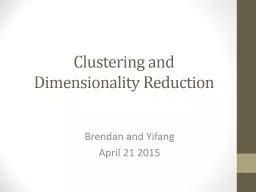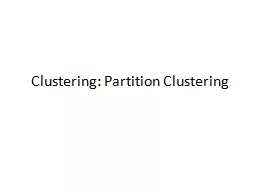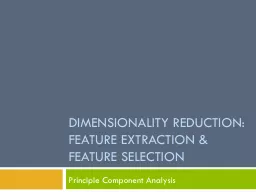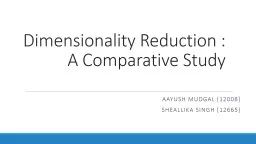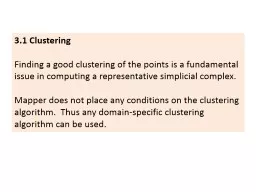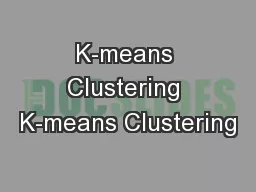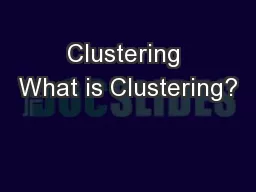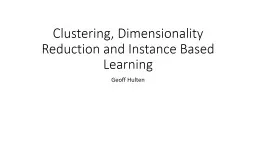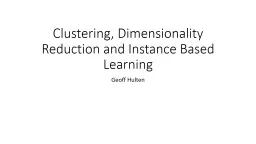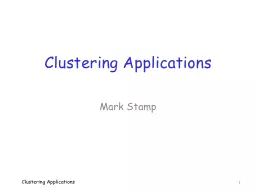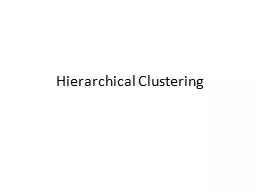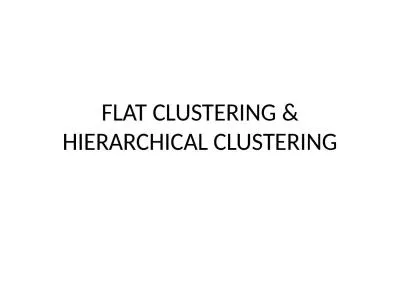PPT-Clustering and Dimensionality Reduction
Author : lois-ondreau | Published Date : 2016-08-02
Brendan and Yifang April 21 2015 Preknowledge We define a set A and we find the element that minimizes the error We can think of as a sample of Where is the
Presentation Embed Code
Download Presentation
Download Presentation The PPT/PDF document "Clustering and Dimensionality Reduction" is the property of its rightful owner. Permission is granted to download and print the materials on this website for personal, non-commercial use only, and to display it on your personal computer provided you do not modify the materials and that you retain all copyright notices contained in the materials. By downloading content from our website, you accept the terms of this agreement.
Clustering and Dimensionality Reduction: Transcript
Download Rules Of Document
"Clustering and Dimensionality Reduction"The content belongs to its owner. You may download and print it for personal use, without modification, and keep all copyright notices. By downloading, you agree to these terms.
Related Documents

